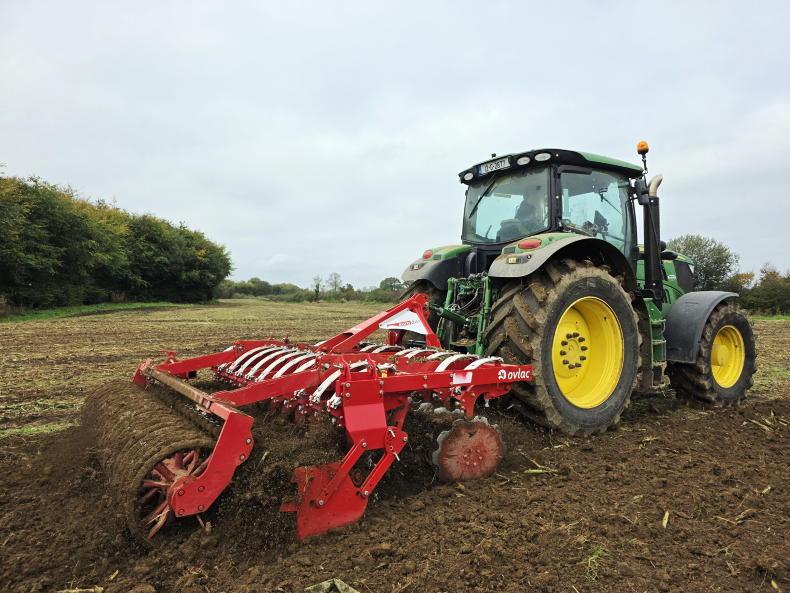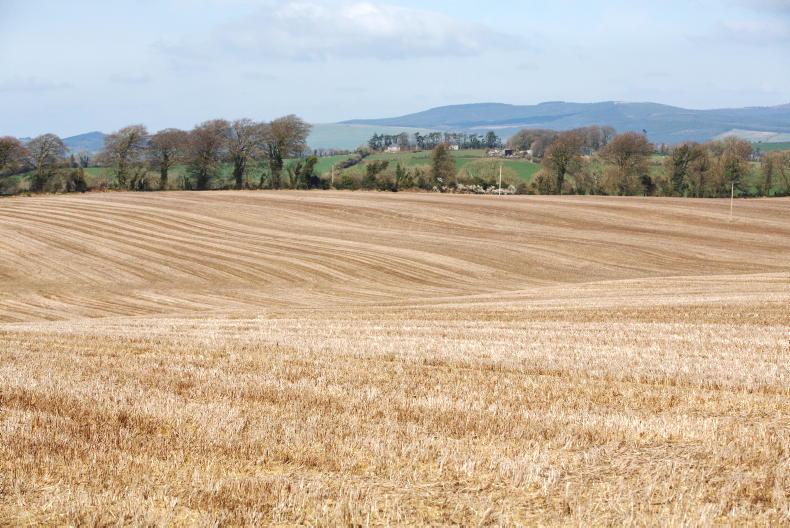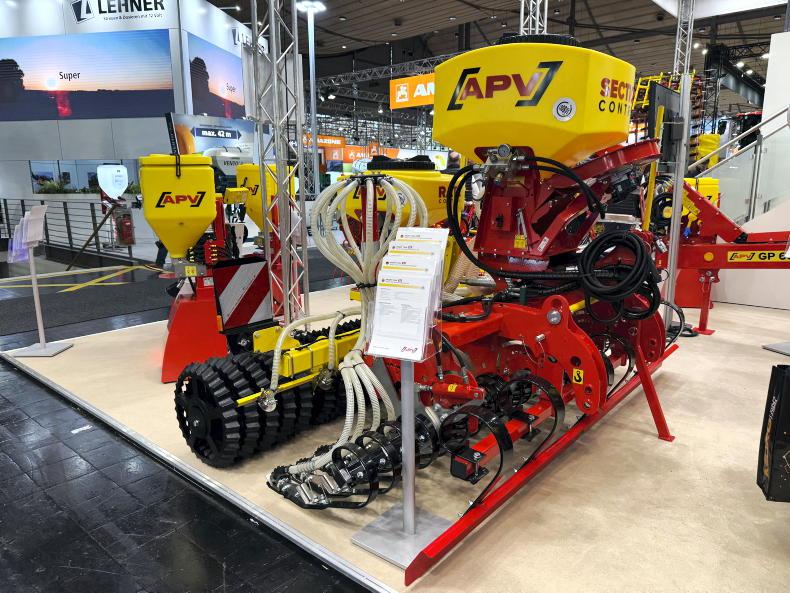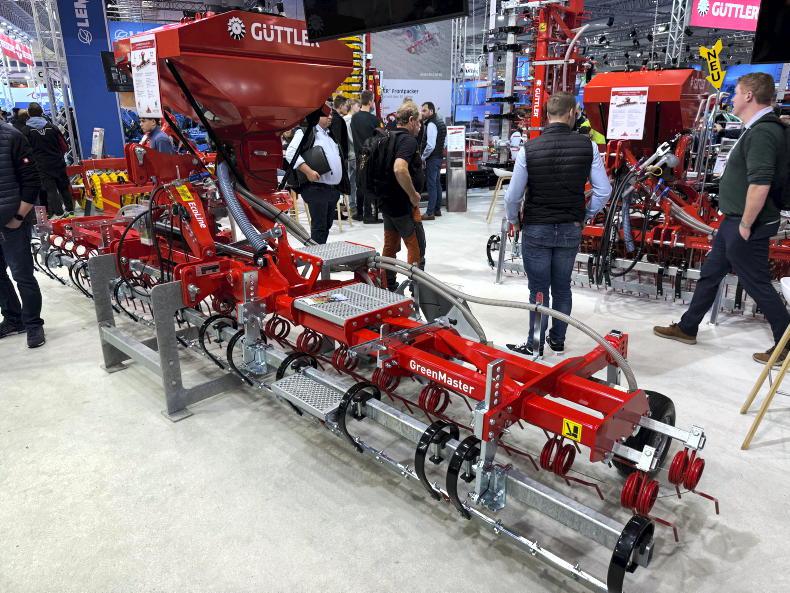As Irish farmers strive to reduce their greenhouse gas emissions, there is every likelihood that the area being reseeded per year will increase. Establishing clover and multispecies swards is seen as a quick-fix solution to emissions from fertiliser use. Research and on-farm experience is showing the potential that exists for legumes to reduce fertiliser use and improve animal performance.
So what is the best method of reseeding? The simple answer to that is that all methods are successful when used correctly. Previous Teagasc research has found that there is no difference in establishment method on subsequent sward performance.
1. Ploughing
Ploughing, or full inversion tillage, is the traditional way that grass seeds were sown. It’s an effective way of reseeding, but has a number of distinct disadvantages. Firstly, it involves significant soil disturbance, which not only releases a lot of carbon dioxide stored in the soil, but also mineralises nitrogen and can lead to elevated levels of nitrate leaching in the years after ploughing. For this reason, ploughing is banned on derogation farms after 31 May each year.
Another downside to ploughing is the risk of ploughing up a lot of stones, which then need to be handpicked. After ploughing, the field should be left to dry out before further cultivating or levelling which, depending on soil type, can take time. The seedbed needs to be fine and firm before sowing with a seed drill, grass seed barrow or fertiliser spreader. Germination is usually quickest after ploughing. Typical costs for tilling and sowing with a drill is €75 to €100/acre.

Ploughing is the traditional method of reseeding. \ Donal O' Leary
2. Discing
Discing involves heavy cultivation of the soil without needing to plough. It usually involves three runs of a heavy disc at alternating angles, to create maximum soil disturbance. Because a disc generally doesn’t go as deep as a plough, there is a lower risk of nitrate losses, but it is still expected to be much higher than say minimum tillage or no tillage methods. Another issue with discing is that it can be difficult or impossible to level the field surface after discing. Some farmers note that fields get uneven after discing. It’s important to note that at least three weeks should pass between spraying off the field with glyphosate and discing, as this will allow the majority of the existing sward to die off and regress before cultivating, thus reducing the number of grass root clumps after cultivating. Typical costs of discing are €10-€15/acre per run, with most fields needing three runs.

Guttler machine has heavy and light tines, which bring up some tilth for seed to soil contact.
3. Min-Till
Min-till involves minimum cultivation of the soil prior to sowing. Like discing, the old sward should be left for at least three weeks after spraying with glyphosate before sowing, to allow it to die fully and regress.
Min-till machines generally involve implements with light to medium tines, which scratch the surface and bring up some tilth. An air seeder then drops the seed and, in the case of a Guttler machine, it is rolled into the seedbed. Tine seeders, such as an Einbock machine, do not have built in rollers.
Germination after min-till machines can sometimes be slower than other methods in the initial stages, but after 60 days there is usually no difference.
The advantage of this system is that soil disturbance and nutrient loss are minimised. Other advantages are no stones to be picked and only one pass is required.

A Moore Unidrill is an example of a zero-till slot seeder.
4. No-Till
No-till methods of reseeding generally refer to slot seeders, such as the Erth seeder, Moore drill, or Aitchison seed drill. Each of these machines operates on the same principle of sowing seed into a slot in the soil.
The slot is opened by a vertical disc and the seed is dropped into the slot through a coulter. The Erth and Moore drills have their own rollers on the back, while the Aitchison drill does not have a roller attached.
The key advantage of this sowing method over min-till is that the seeds can be sown before or just after the field is sprayed with glyphosate, which greatly speeds up the whole reseeding process.
For example, let’s say there is a grass cover of 800kg DM/ha on the field. The field can be sprayed with glyphosate and on either the following day or the day before, the field can be sown with the slot seeder and then six or seven days later grazed with livestock or cut for silage.
Over the following weeks the old sward and roots will be dying off at the same time as the new seeds will be emerging. Typical costs for no-till sowing are €80/acre.
As Irish farmers strive to reduce their greenhouse gas emissions, there is every likelihood that the area being reseeded per year will increase. Establishing clover and multispecies swards is seen as a quick-fix solution to emissions from fertiliser use. Research and on-farm experience is showing the potential that exists for legumes to reduce fertiliser use and improve animal performance.
So what is the best method of reseeding? The simple answer to that is that all methods are successful when used correctly. Previous Teagasc research has found that there is no difference in establishment method on subsequent sward performance.
1. Ploughing
Ploughing, or full inversion tillage, is the traditional way that grass seeds were sown. It’s an effective way of reseeding, but has a number of distinct disadvantages. Firstly, it involves significant soil disturbance, which not only releases a lot of carbon dioxide stored in the soil, but also mineralises nitrogen and can lead to elevated levels of nitrate leaching in the years after ploughing. For this reason, ploughing is banned on derogation farms after 31 May each year.
Another downside to ploughing is the risk of ploughing up a lot of stones, which then need to be handpicked. After ploughing, the field should be left to dry out before further cultivating or levelling which, depending on soil type, can take time. The seedbed needs to be fine and firm before sowing with a seed drill, grass seed barrow or fertiliser spreader. Germination is usually quickest after ploughing. Typical costs for tilling and sowing with a drill is €75 to €100/acre.

Ploughing is the traditional method of reseeding. \ Donal O' Leary
2. Discing
Discing involves heavy cultivation of the soil without needing to plough. It usually involves three runs of a heavy disc at alternating angles, to create maximum soil disturbance. Because a disc generally doesn’t go as deep as a plough, there is a lower risk of nitrate losses, but it is still expected to be much higher than say minimum tillage or no tillage methods. Another issue with discing is that it can be difficult or impossible to level the field surface after discing. Some farmers note that fields get uneven after discing. It’s important to note that at least three weeks should pass between spraying off the field with glyphosate and discing, as this will allow the majority of the existing sward to die off and regress before cultivating, thus reducing the number of grass root clumps after cultivating. Typical costs of discing are €10-€15/acre per run, with most fields needing three runs.

Guttler machine has heavy and light tines, which bring up some tilth for seed to soil contact.
3. Min-Till
Min-till involves minimum cultivation of the soil prior to sowing. Like discing, the old sward should be left for at least three weeks after spraying with glyphosate before sowing, to allow it to die fully and regress.
Min-till machines generally involve implements with light to medium tines, which scratch the surface and bring up some tilth. An air seeder then drops the seed and, in the case of a Guttler machine, it is rolled into the seedbed. Tine seeders, such as an Einbock machine, do not have built in rollers.
Germination after min-till machines can sometimes be slower than other methods in the initial stages, but after 60 days there is usually no difference.
The advantage of this system is that soil disturbance and nutrient loss are minimised. Other advantages are no stones to be picked and only one pass is required.

A Moore Unidrill is an example of a zero-till slot seeder.
4. No-Till
No-till methods of reseeding generally refer to slot seeders, such as the Erth seeder, Moore drill, or Aitchison seed drill. Each of these machines operates on the same principle of sowing seed into a slot in the soil.
The slot is opened by a vertical disc and the seed is dropped into the slot through a coulter. The Erth and Moore drills have their own rollers on the back, while the Aitchison drill does not have a roller attached.
The key advantage of this sowing method over min-till is that the seeds can be sown before or just after the field is sprayed with glyphosate, which greatly speeds up the whole reseeding process.
For example, let’s say there is a grass cover of 800kg DM/ha on the field. The field can be sprayed with glyphosate and on either the following day or the day before, the field can be sown with the slot seeder and then six or seven days later grazed with livestock or cut for silage.
Over the following weeks the old sward and roots will be dying off at the same time as the new seeds will be emerging. Typical costs for no-till sowing are €80/acre.













SHARING OPTIONS